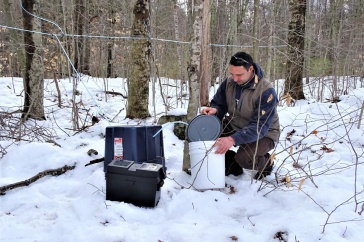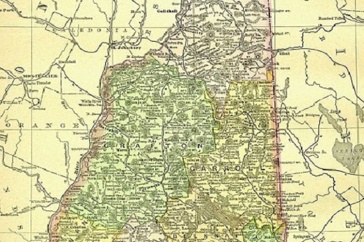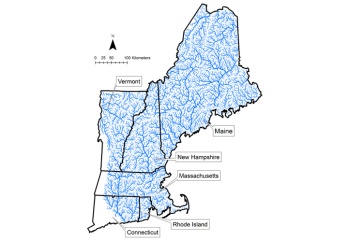
As an archaeological survey based near P8bagok Bay — Great Bay’s ancestral name in the Indigenous Abenaki language — begins to wrap up, UNH researchers are piecing together a more accurate vision of the region’s past, one that pushes back on the colonial narrative of Indigenous savagery and warfare and uncovers some uncomfortable truths about local landowners who enslaved people from Africa.
That history is now on display as an online StoryMap featuring artifacts from the project and their country of origin, audio clips from project collaborators and details on the nuanced relationships between people and the environment.
The Great Bay Archaeological Survey (GBAS) is a five-year, community-engaged project that focuses on the time period around the 17th and 18th centuries, when British colonialists descended on the region to capitalize on its abundant natural resources. The project has been led by Meghan Howey, a UNH professor of anthropology in the College of Liberal Arts and the Earth Systems Research Center.
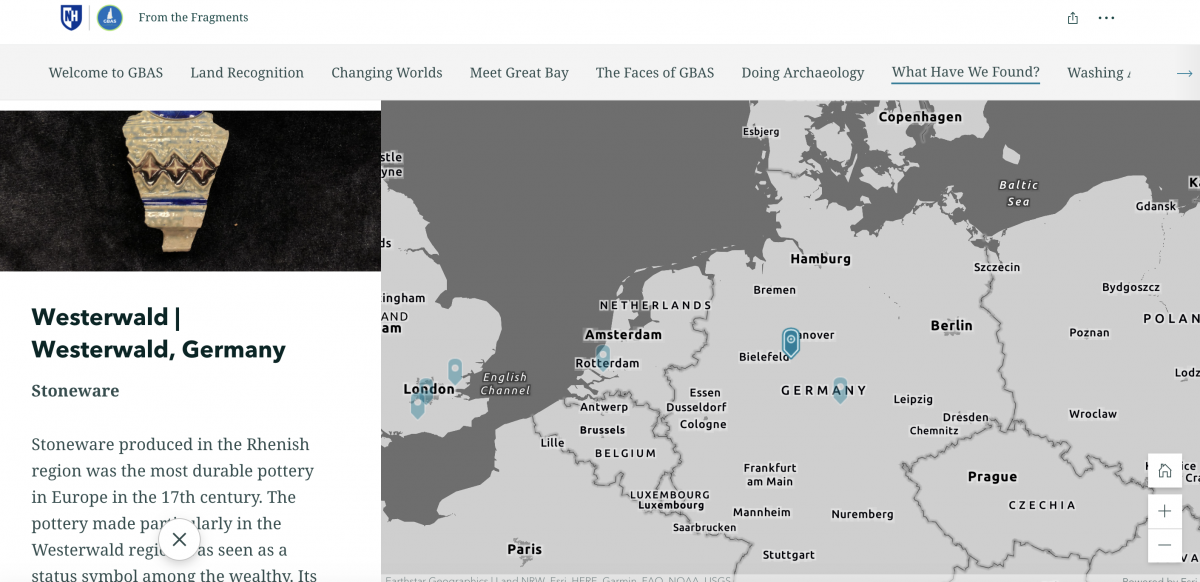
“The landscape we’re living in today is the legacy of radical changes from the past,” says Howey. “There was a major shock to the ecological and social systems when the colonialists arrived. Great Bay serves as a living lab — it’s very sensitive to human impacts — and our archaeology provides an opportunity to interrogate moments in time.”
Howey’s StoryMap, which was built with help from UNH Extension’s GIS specialist Shane Bradt, allows the reader to take a deep dive into their findings; she’s also working on a book about the research. “My mind is blown at how much is here, and by how little archaeology has been done so far,” she adds.
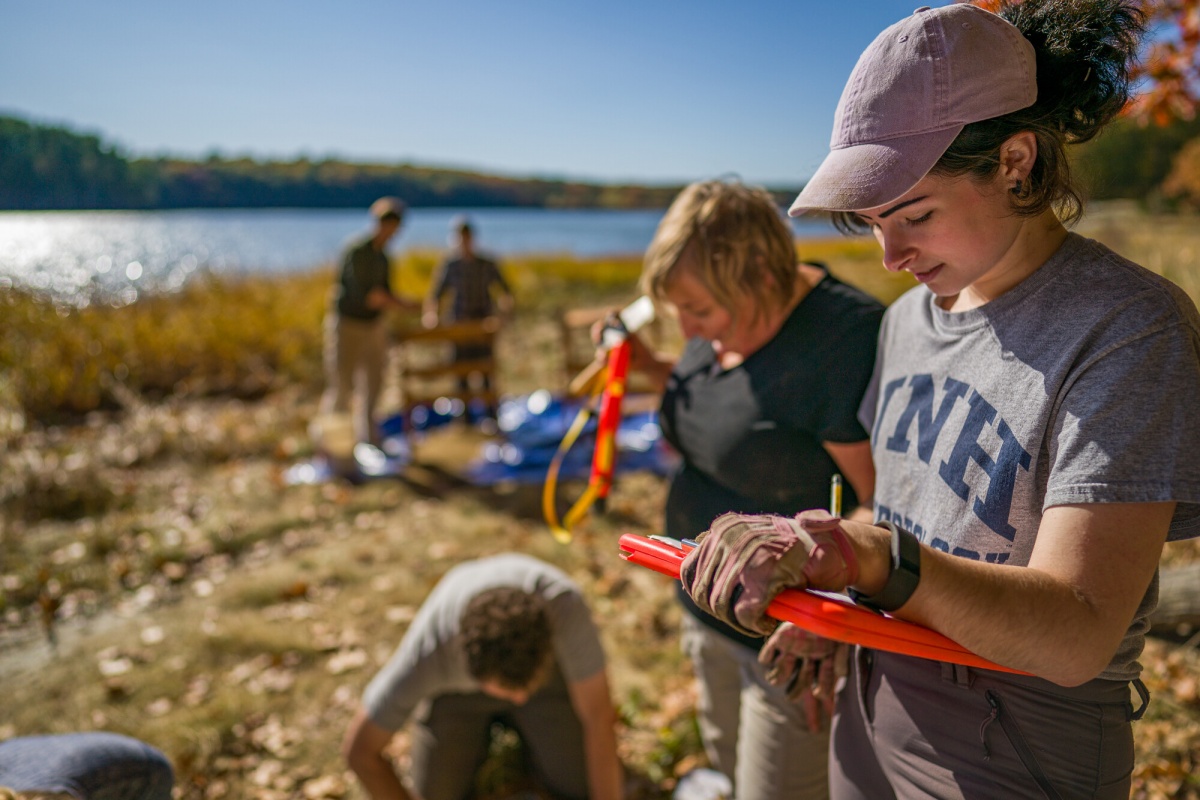
Over the past five years of the project, Howey has amassed a crew of collaborators from all walks of life: UNH students and faculty, community volunteers, Indigenous people, amateur historians, geneaologists and teachers worked side by side, poring through historical deeds, digging test holes, flying drones equipped with ground-penetrating radar and identifying ceramics, tools and food remains, all in an effort to sift through the ages and set the record straight.
“What we’ve discovered will rewrite the book on our history,” says Denise Pouliot, head female speaker of the Cowasuck Band of the Penacook Abenaki People. Pouliot, along with her partner Paul Pouliot, the head male speaker of the same band, have worked closely with Howey on GBAS field sites as artifacts were unearthed. “We found our native foods in the hearths of the colonialists, tools that were traded, clay pipes from around the world – there was an intersection between the two cultures; it wasn’t all warfare,” Paul Pouliot says.
The team continued to dig through time; the world’s political climate drove the Raid on Oyster River in 1694, during which the lives of one colonial family were spared — likely because of their harmonious relationship with the Indigenous people, Howey says. Some years later, that family claimed neighboring lands for their own and enslaved eight people from Africa.
"Some things we can only find out through archaeology - the remnants of our past are really buried now."
Indentured Scottish soldiers were also part of the region’s history, and Howey hopes that future archaeological projects can focus on these specific focal points in greater depth. “We haven’t heard those stories yet,” she notes.
Every physical artifact supporting GBAS’s findings has been washed, catalogued and stored by Emily Mierswa ’18, who has served as its archaeology lab manager since 2017. In her role, she helps to plan for each archaeology field season and manages all the paperwork and notes to keep detailed records of their work. From tiny fragments of porcelain cups to French gunflint, Mierswa has kept tabs of it all.
“A project like this that offers free opportunities to learn archaeological field methods is so rare,” Mierswa says, noting that it allowed her gain the experience necessary to apply for graduate school at Simon Fraser University, where she is currently pursuing her master’s degree in archaeology.
Paul Pouliot notes that although he and Denise have a lot of expertise in identifying potential dig sites and adding their cultural perspective on the importance of the findings, a project like GBAS benefits from collaboration among people with a variety of knowledge and skill sets.
“Some things we can only find out through archaeology — the remnants of our past are really buried now,” he adds.
The GBAS StoryMap can be accessed and shared via the website https://bit.ly/greatbayarchaeology. The GBAS Project was funded by the James H. and Claire Short Hayes Professor of the Humanities, UNH Center for the Humanities as well as supported by an Andrew Carnegie Fellowship.
The Institute for the Study of Earth, Oceans, and Space (EOS) is UNH's largest research enterprise, comprising six centers with a focus on interdisciplinary, high-impact research on Earth and climate systems, space science, the marine environment, seafloor mapping and environmental acoustics. With more than $60 million in external funding secured annually, EOS fosters an intellectual and scientific environment that advances visionary scholarship and leadership in world-class research and graduate education.
-
Written By:
Rebecca Irelan | Institute for the Study of Earth, Oceans, and Space | rebecca.irelan@unh.edu | 603-862-0990

















































